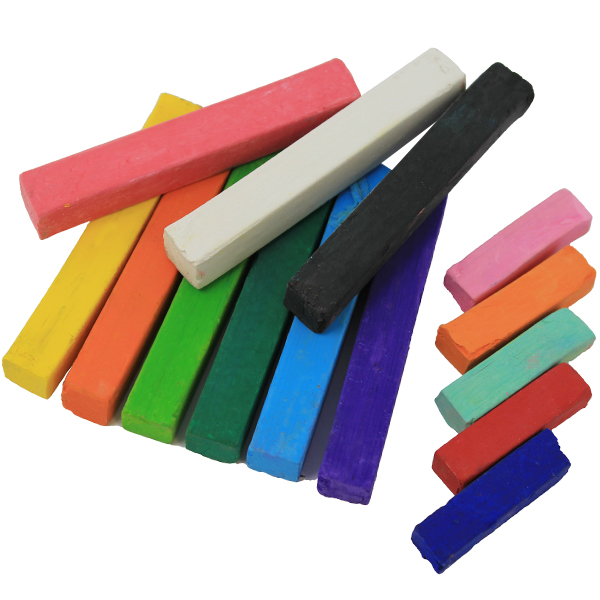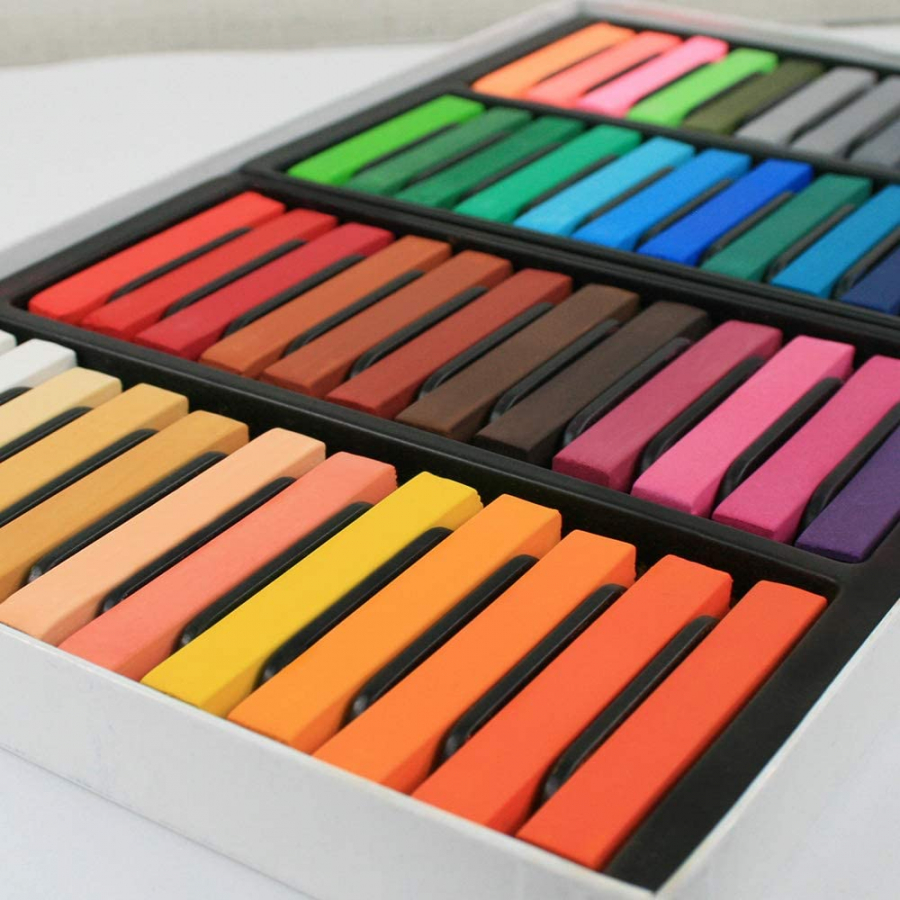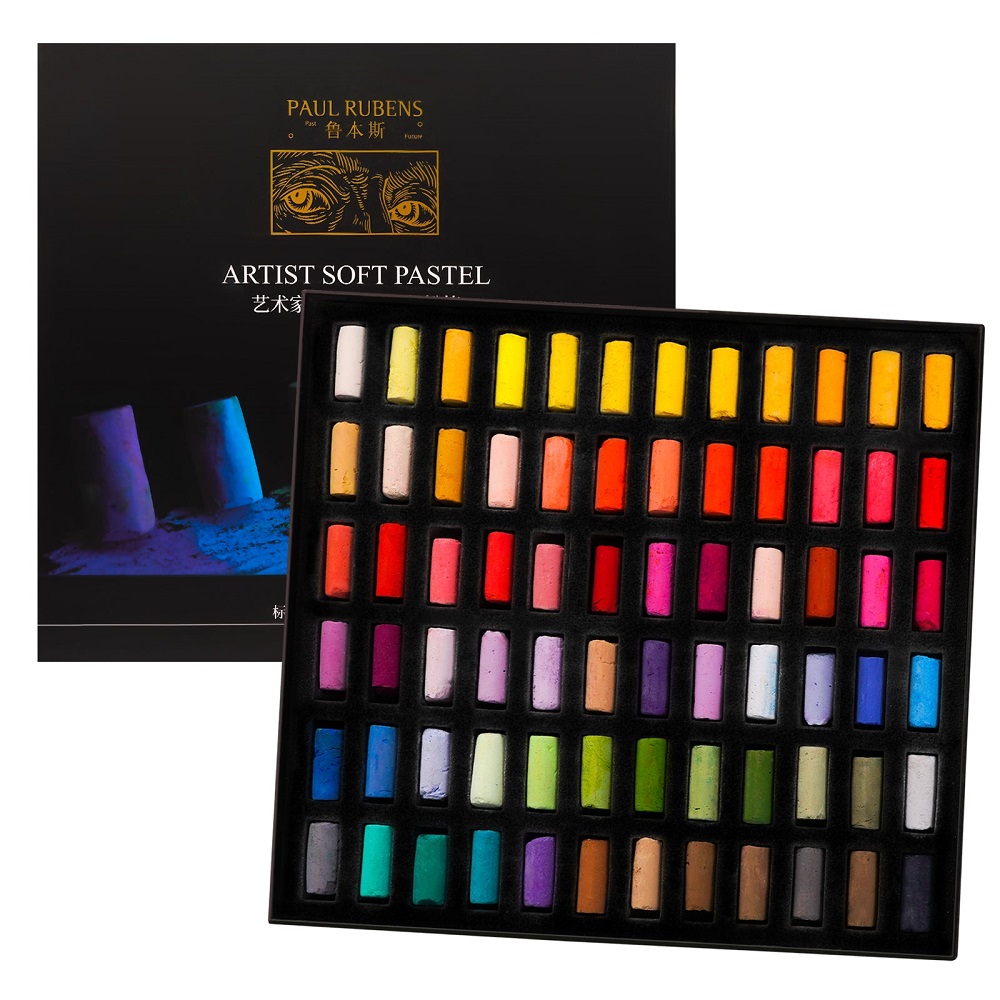Introduction to Pastels
The world of pastels is vibrant and full of creative potential. Pastels, known for their rich pigments and versatile usage, offer artists a spectrum of possibilities. Often, artists find themselves choosing between oil pastels and soft pastels. Both provide unique experiences and outcomes. Oil pastels are waxy and vibrant, while soft pastels are known for their delicate, powdery textures. In this blog, we will explore the ins and outs of both types. We’ll look at their composition, techniques for use, and the surfaces they work best on. Our goal is to help you understand soft pastel vs oil pastel, so you can choose the right medium for your art. Whether you are just starting or seeking to refine your skills, this showdown will illuminate the possibilities each medium holds.
Composition and Texture
Discover the unique makeup and feel of oil and soft pastels.
Oil Pastels Composition and Texture
Oil pastels are a blend of pigment, wax, and oil. This mix makes them soft and creamy. They glide smoothly and are perfect for bold work. Artists love their durability and rich colors. The waxy content keeps them from crumbling and creates little to no dust.
Soft Pastels Composition and Texture
Soft pastels are mostly pigment with a bit of binder. Usually, it’s a gum-like substance. They have a powdery texture and are great for fine details. Soft pastels blend effortlessly. They produce a charmingly dusty effect when used, ideal for achieving soft shades and transitions.

Techniques for Blending and Layering
Blending and layering are crucial in achieving depth and richness in pastel art.
Oil Pastels Blending and Layering
Oil pastels present a unique challenge in blending due to their waxy nature. To blend, artists may layer colors and use tools, like a palette knife or even a finger. Solvents can help create smooth transitions. When layering, it’s easy to create dynamic and textured effects because the pigments mix less. Careful cleaning of pastel tips is needed to avoid color contamination.
Soft Pastels Blending and Layering
Soft pastels excel in blending. Artists often use their fingers or soft blending tools to fuse colors. This medium’s powdery texture is perfect for smooth gradients. With soft pastels, layering should be done with a light touch to prevent colors from becoming muddy. Dust from the pastels can be blown away to maintain clarity.
Color Intensity and Pigment Behavior
Oil Pastel Color and Durability
Oil pastels shine with exceptional color intensity. Their bold hues and waxy composition make them stand out. With oil pastels, colors remain vivid over time, thanks to their oil mix. These pastels don’t dry completely, which contributes to their lasting vibrancy. The durable nature of oil pastels is notable. They resist environmental factors well and maintain their bright appearance. For artists seeking longevity in their work, oil pastels are a strong choice.
Soft Pastel Color Texture and Subtlety
Soft pastels offer a unique color texture. They provide artists with a wide range of subtle tones. Their powdery consistency allows for soft, muted blends between shades. The pure pigments used in soft pastels create a depth of color that’s hard to match. However, these colors may need protection against fading. Applying a fixative can help preserve the soft pastel color’s integrity. Soft pastels are perfect for achieving a delicate, nuanced look in your artwork.

Versatility of Surfaces
Choosing the right surface can elevate your pastel work.
Suitable Surfaces for Oil Pastels
Oil pastels love a good grip. They work well on textured papers and even wood. Use thick paper to avoid tears from their weight. Try canvas for a sturdy base that holds layers. Wood gives a unique texture to your art. You can even draw on glass with oil pastels! Always check for acid-free options to keep colors lasting long.
Suitable Surfaces for Soft Pastels
Soft pastels need texture to stick. Rough paper like watercolor or pastel paper works great. Sandpaper’s grit holds pastel well, ideal for fine detail. Pastel board can also be a good choice, with a surface that’s ready to grab pigment. Remember to seal your soft pastel art with fixative to protect it.
Exploring Artistic Techniques
Specific Techniques for Oil Pastels
Oil pastels, with their creamy texture, open up a world of techniques. Artists can use bold, heavy strokes to lay down thick layers of color. Sgraffito, a method of scratching off the top pastel layer to reveal colors beneath, is popular for texture creation. Incorporating solvents, like mineral spirits, allows for smooth blending akin to oil paints. Oil pastels also work well for impasto techniques, where colors are applied thickly to create a textured surface.
Specific Techniques for Soft Pastels
Soft pastels offer their own special techniques. Due to their powdery texture, blending is simple, often achieved with the artist’s fingertips or a blending stump for soft transitions. Feathering is another soft pastel technique where light strokes build up color and texture. For detail work, artists turn to pastel pencils to add fine lines and crisp edges. With fixatives, the final piece is set, protecting the delicate pastel work from smudging and fading.
Pros and Cons for Artists
Choosing between soft pastel vs oil pastel depends on what you look for in art. Each medium has benefits and downsides. Such knowledge is key to picking the right material for your work.
Oil Pastels Advantages and Considerations
Oil pastels stand out with their vivid colors and flexibility. They stick to a variety of surfaces, making them versatile for different projects. They don’t crumble, so they are less messy. Perfect for heavy layering, oil pastels can mimic the look of oil paints. However, blending them can be hard. They can feel sticky, and they need special fixatives to stop smudging.
Soft Pastels Advantages and Considerations
Soft pastels are known for their gentle, powdery finish. They blend easily, making them ideal for soft, subtle art. They’re great for creating delicate transitions in color. Yet, soft pastels break easily and create dust. This can be messy and might bother some people. They can also fade without a fixative to protect the artwork. Artists love the range of subtle tones they offer for detailed work.

Conclusion and Final Thoughts
After walking through the colorful paths of both soft pastel vs oil pastel, it’s clear that each medium shines in its unique way. The choice between soft pastel vs oil pastel depends hugely on the artist’s preferences and the project at hand. Oil pastels boast vivid hues and a durable finish, ideal for those who prefer a bold and lasting impression. On the other hand, soft pastels offer a delicate allure, with unmatched ability to blend and create subtle transitions, perfect for artists who aim for a soft and nuanced look.
In the end, it’s not about which is superior, but rather which medium aligns best with your artistic vision and technique. Perhaps the joy lies in experimenting with both, discovering how each one can bring a different dimension to your artwork. Whether it’s the creamy, thick layers of oil pastels or the gentle, powdery finish of soft pastels, your creativity is the true winner. As you explore the rich landscapes that pastels provide, remember to consider the surface, technique, and protective measures to ensure the longevity of your work.
Embrace the characteristics, techniques, and potential that each type offers. May your artistic journey be filled with vibrant colors and expressive textures as you harness the power of oil and soft pastels to bring your visions to life!